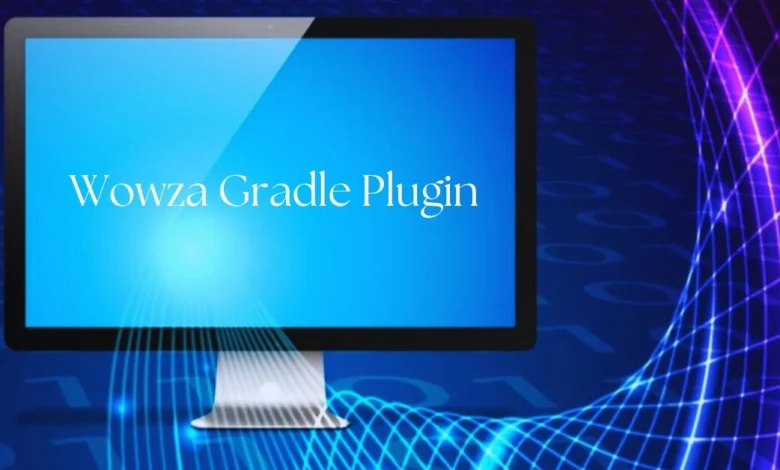Wowza Gradle Plugin: A Comprehensive Guide for Seamless Streaming Integration

Introduction to Wowza Gradle Plugin
In the ever-evolving landscape of digital streaming, finding the right tools can make all the difference. Enter the Wowza Gradle Plugin—a game-changer for developers and content creators alike. This powerful plugin streamlines your workflow, enabling seamless integration with various streaming platforms while enhancing performance and flexibility.
Imagine a world where you can effortlessly deploy and manage your streaming applications without getting bogged down by tedious configurations. The Wowza Gradle Plugin is designed to do just that, allowing you to focus on what truly matters: delivering exceptional content to your audience.
Whether you’re new to streaming or looking to elevate your existing setup, this comprehensive guide will walk you through everything you need to know about harnessing the power of the Wowza Gradle Plugin. Get ready to transform how you approach live video delivery like never before!
Benefits of Using Wowza Gradle Plugin for Seamless Streaming
The Wowza Gradle Plugin transforms the streaming landscape for developers. It simplifies the integration process, making it easier to manage project dependencies efficiently.
One major advantage is streamlined workflows. With automated tasks, you can focus more on coding and less on configuration issues.
Flexibility is another key benefit. The plugin allows seamless customization to meet various streaming needs, whether it’s live events or video-on-demand services.
Additionally, real-time updates are a game changer. Developers can quickly adapt their setups without extensive downtime, ensuring uninterrupted service delivery.
Moreover, robust community support enhances its appeal. Users can access helpful resources and shared experiences that facilitate troubleshooting and optimization efforts seamlessly.
By leveraging the Wowza Gradle Plugin, you elevate your streaming application’s performance significantly while enjoying a hassle-free development experience.
Step-by-Step Guide for Installing and Setting Up the Plugin
Installing the Wowza Gradle Plugin is straightforward. Start by opening your terminal or command prompt and navigate to your project directory.
Next, you’ll need to add the plugin dependency in your `build.gradle` file. Include the following lines:
“`groovy
plugins {
id ‘com.wowza.plugin’ version ‘1.0’
}
“`
After that, run a Gradle build to download and integrate the plugin into your environment.
Once installed, configure it according to your streaming needs. Update settings like server URL and stream details in the same `build.gradle` file.
Validate installation by running sample commands provided in the documentation. This step ensures everything works smoothly before diving deeper into customization options.
How to Integrate Wowza with Popular Streaming Platforms
Integrating the Wowza Gradle Plugin with popular streaming platforms can enhance your content delivery. Start by selecting your desired platform, whether it’s YouTube, Facebook Live, or Twitch.
For YouTube integration, utilize the REST API to authenticate and stream directly from Wowza. Configure your application settings in the Wowza Streaming Engine Manager for seamless connectivity.
When working with Facebook Live, ensure you obtain a Stream Key from your account. Input this key into the appropriate field within your Wowza configuration to go live effortlessly.
With Twitch, it’s similar; grab the Stream Key from your dashboard and set up a new application in Wowza. This allows real-time engagement with viewers while leveraging powerful streaming capabilities.
Always refer to each platform’s documentation for specific requirements. Staying updated on their changes ensures smooth interactions and optimal performance across all channels.
Advanced Features and Customization Options of Wowza Gradle Plugin
The Wowza Gradle Plugin offers a robust set of advanced features that cater to developers looking for flexibility and control. One standout feature is its ability to handle multiple streaming protocols simultaneously, allowing users to customize their streaming experience based on audience needs.
Another significant option is the integration with third-party APIs. This allows for easy enhancements, such as analytics tools or real-time monitoring solutions, which can be tailored to specific project requirements.
Customization doesn’t stop there; the plugin also supports various encoding settings. Developers can adjust video codecs, bitrates, and resolutions according to their unique scenarios without hassle.
Additionally, it facilitates automated deployment processes. By leveraging Gradle’s build automation capabilities, you can streamline your workflow and ensure consistent delivery of high-quality streams every time.
These advanced features make the Wowza Gradle Plugin an appealing choice for developers aiming for seamless streaming solutions.
Troubleshooting Common Issues with the Plugin
When using the Wowza Gradle Plugin, you might encounter some common issues. One frequent problem is dependency conflicts. This can occur if your project relies on different versions of libraries. Ensure that all dependencies are compatible and resolve any discrepancies.
Another issue is incorrect configuration settings. Double-check your `build.gradle` file for typos or missing parameters. Even a small error can cause integration failures.
If you’re facing performance lags during streaming, it could be due to insufficient resources allocated in your server environment. Monitor CPU and memory usage, making adjustments as needed to optimize performance.
Don’t overlook logging messages generated by the plugin; they often provide valuable insights into what went wrong. Reviewing these logs can lead to quick resolutions without wasting time trying random fixes.
Real-Life Examples of Successful Integration with Wowza Gradle Plugin
Many companies have successfully integrated the Wowza Gradle Plugin, showcasing its versatility. For instance, a popular online education platform used it to streamline their live streaming services for virtual classrooms. By leveraging this plugin, they enhanced video quality while ensuring minimal latency.
Another notable example includes a gaming company that wanted to broadcast tournaments globally. With the Wowza Gradle Plugin, they seamlessly connected various tools and automated workflows. This resulted in an engaging experience for viewers around the world.
A healthcare provider also adopted the plugin to create secure telehealth solutions. They integrated live video capabilities with ease, improving patient access and communication without compromising security.
These examples reflect how diverse industries can harness the power of WOWZA’s technology through seamless integration via this efficient tool.
Conclusion: Why You Should Consider Using
The Wowza Gradle Plugin stands out as a powerful tool for developers looking to enhance their streaming capabilities. Its seamless integration with popular platforms simplifies the development process, ensuring that users can focus on delivering quality content rather than wrestling with complex configurations.
With its robust set of features and customization options, this plugin allows for tailored streaming solutions that cater to specific needs. The ease of installation and setup means you can get started quickly, while the troubleshooting resources help maintain smooth operation.
Real-life success stories highlight how organizations have leveraged the Wowza Gradle Plugin to achieve impressive results in their streaming projects. Whether you’re just starting or are an experienced developer seeking new efficiencies, the benefits offered by this plugin are undeniable.
Adopting the Wowza Gradle Plugin could be a game-changer for your streaming strategy. Embrace its potential and elevate your content delivery experience today.
You can explore more about insurance and its benefits by reading our detailed article on Understanding Monaco Zirawa Insurance.



